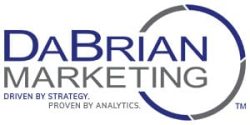Google Analytics provides ample documentation discussing their various code libraries. However, for someone just starting out, this information can be overwhelming. Even a Google subject can yield millions of results. So to simplify things, let’s start at the very beginning.
What is an API?
API stands for Application Programming Interface and is used to describe how one piece of software interacts with others. APIs are generally used by programmers and developers to create applications that can interact with another company’s application or database. For the purpose of this blog, we will be taking a look at the Google Analytics API, its components, and potential uses.
What is the GA API?
The Google Analytics API (GA API) is a code library written in several computing languages that allows application developers to collect and receive information from the Google servers. At this time, a full data dump is unavailable, but developers can pick and choose specific metrics or dimensions to pull from Google and use for further data analysis. In GA terms, metrics are numeric values, while dimensions are strings.
Google’s intention for releasing the API is to give developers free roam to develop new and exciting applications. Since entire code libraries are provided, the possibilities are endless.
The Collection API
Google’s Collection API is used to collect data, generally specific metrics or dimensions. The default code for collecting data is written in JavaScript, and is provided to all Google Analytics users to place on their site. This piece of code links the Google account with the website, and, after verification, will start collecting data. In addition to the standard piece of code, the code can also be customized to collect specific pieces of data.
After the data is collected from the website, Google passes it through a series of functions to produce the data that is in the dashboard section of the account. It also produces a series of graphics in relation to key performance indicators.
The Reporting APIs
There are two different kinds of reporting APIs. The first of the two is the Core Reporting API. Its main purpose is to be used to produce general reports. In addition, this would be how to access most of Google’s stored data about the website in question. Applications can be written in a multitude of languages, and there are more languages and resources being added by developers all the time.
The second API is the Multi-Channel Funnels Reporting API. This API is for specific Multi-Channel Funnel data, rather than the open nature of its counterpart. It can be used to create custom reports based on this data. As with the Core Reporting API, there are many languages available for coding.
How Can I Use This?
There are no set rules when it comes to the possibilities for using the APIs, but there are some general uses that many follow. In the hands of a good team of developers, any number of apps can be created to take and manipulate Google’s data to fit business needs.
Currently, one of the most popular uses of the API is data warehousing. Data warehousing is a practice generally used by large companies to store huge amounts of data, often on a remote server. If Google Analytics is used, the data from Google can be added to a data warehouse via the API, depending on the language chosen.
Many developers also use Google’s code to collect and store specific metrics for analysis. Though Google provides a lot of information about site visitors, most data analysts are looking for key performance indicators, or a combination of specific metrics. Coding to use these specific metrics instead of using the default dashboard allows the analyst to have an in-depth look at specific pieces of data, in addition to the big picture.

Leave a Reply